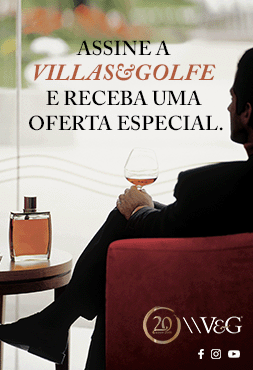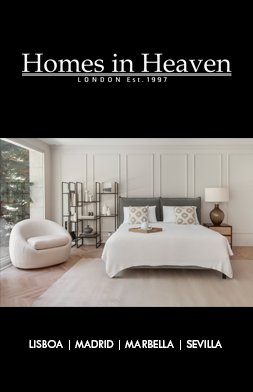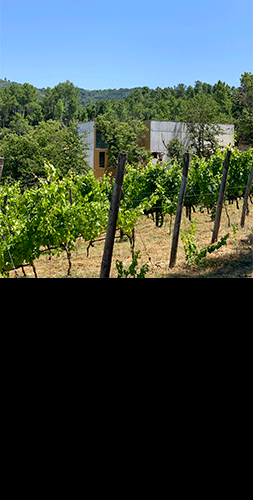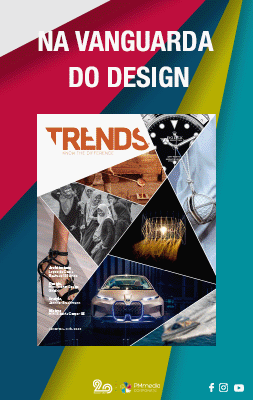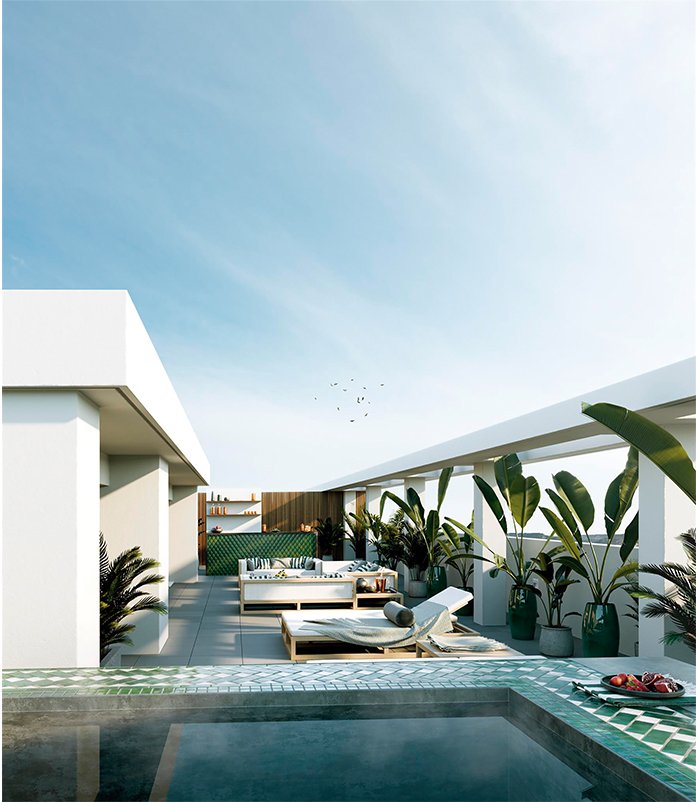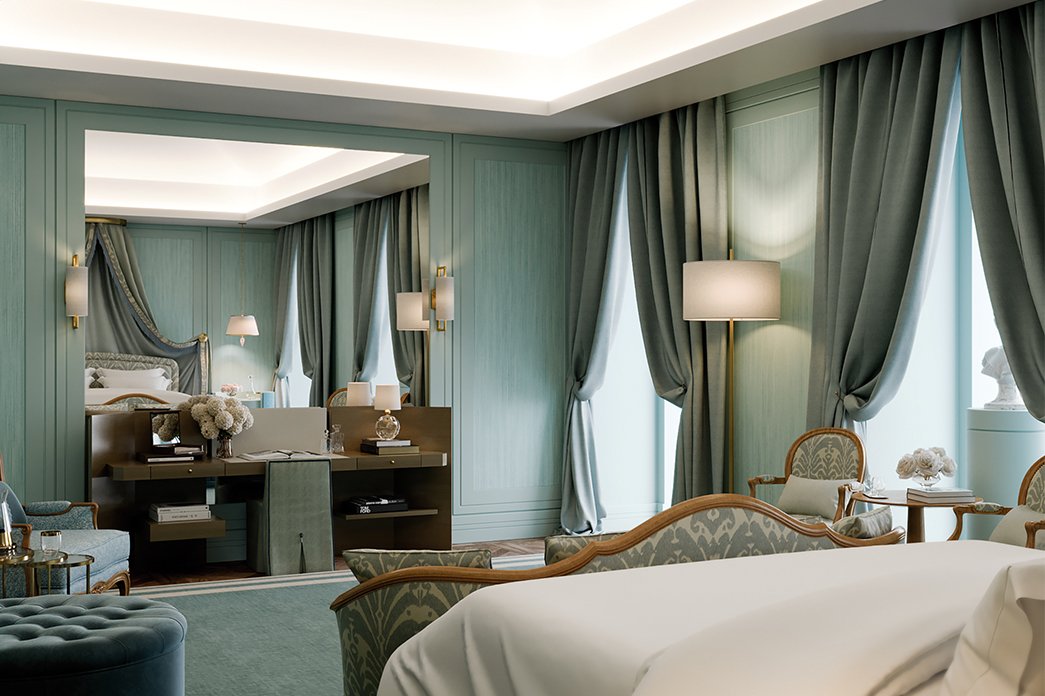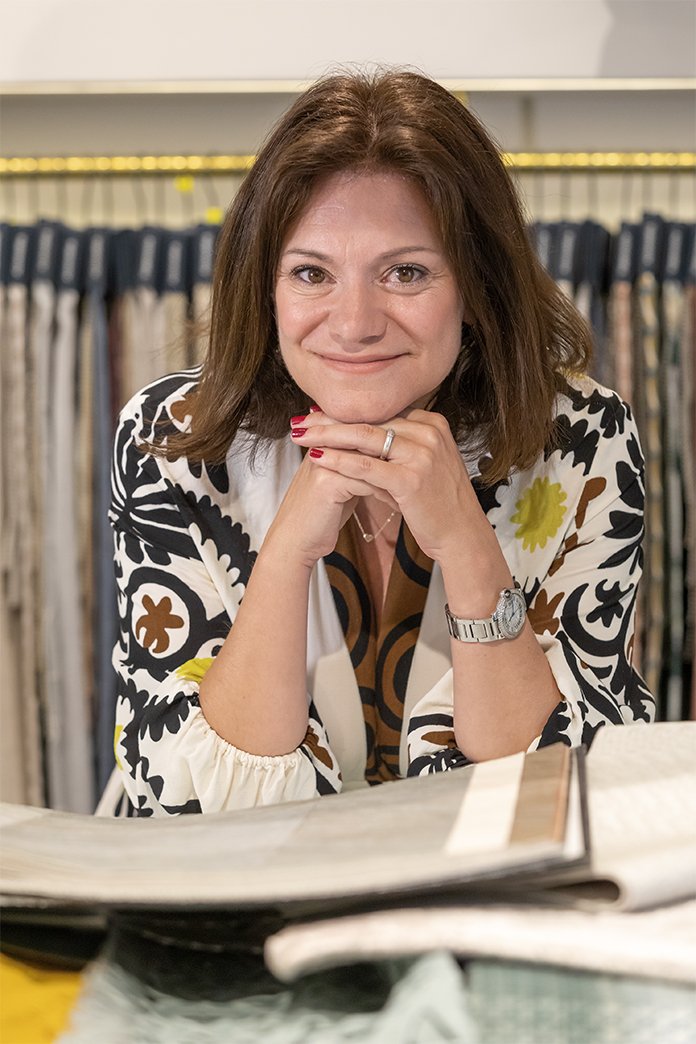
She learned to speak Portuguese at home, with her parents and
grandparents, without ever taking a class. She was born in Portugal, but she
spent her youth in Great Britain. She attended New Hall School in Chelmsford
and took Interior Design at Regent Academy, in London. She returned to the land
of her birth when she was 23. From then on, her life has been made up of ups
and downs. And the smile on her face tells us that she is happy. But she has also
gone through uncertain times. With the pandemic she was forced to reduce the
costs of the studio, to think differently, to work more in outsourcing. But
fortunately, this year, the projects have returned in force. Inêz loves what
she does. She likes to doodle and sketch. She likes to show her clients her
thoughts, so that they can be part of every moment of the process. Then she
moves from drawing, from samples, to the real ‘thing’. And this is where she
wows people with the results. She spoke to Villas&Golfe about
her childhood, the beginning of her career, projects, COVID and the world of interior
design.
Who is Inêz Fino?
I have changed a lot during my life. I used to be very vibrant, very outgoing, but with life’s blows I’ve changed. Nowadays I’m a much more relaxed person. I’m outgoing, but more in the sense of being an out-of-the-box thinker, I lead a calmer life, although I’m always running around, very busy. I’m very open, I smile a lot, and I’m sometimes very serious, because I like to listen and consider things.
And has that out-of-the-box thinking always been well received in interior design projects?
Yes. Clients want our more extravagant ideas. Sometimes they come to us with pieces and say «I want this, but different», and I give my most ‘out-of-the-box’ ideas. The other day a client showed me a fine old mosaic table. We were preparing a large living area, so I suggested making other tables, to complement the playful colours that the mosaics have, and we adapted the existing one, and it all worked out really well. A way for us to make use of that piece. It’s that kind of ‘creative moments’ that clients expect from us.
And on a personal level, thinking ‘out of the box’...
Speaking of décor, on a personal level, I’ve been doing my own houses for years. I’ve lived in several. I’m sick of change in my life (she laughs), but the truth is that it’s not the same as doing a project for a client. I like to examine every corner of my house, every material that exists and I ask myself, «does this look good with this new collection? What about painting the door blue-grey? What if... »
Your mother and grandmother always had a taste for decorating. Your mother, as far as I know, was one of the first people to take a course in Interior Design. Was it predestined that you would do interior design too?
When we were small and grew up with mum changing things around the house, making changes, and asking «do you think this piece of furniture looks good over there, etc.»; or when she would take me with her to the factories, to Viúva Lamego, where I saw the prisoners painting the tiles; or then we would choose the fabrics we brought from England... it was only inevitable that I would follow this path. And I had a great time. So, I’ve been this [an interior designer] since I was a little girl, with my mother, and, sometimes, with my grandmother. On both sides of the family.
Professionally speaking, you have 26 years of experience. What baggage do you bring with you?
When I finished my degree in England, I came back to Portugal and tried to work as an interior designer. At the time, there were a handful of well-known designers, who I knew very well because they had either studied with my mother – who also studied Interior Design –, or were personal friends. I went to see all of them, but they would say to me: «Inês, I don’t mind you coming to work with me, but I can’t pay you, it’ll have to be like an internship, unpaid». The truth is I had finished my studies and I wanted to earn some money, even if it wasn’t very much. So, I went into a completely different area. I went into the arts, as a teacher, in São Domingos de Rana, and I stayed there for a short period. In the meantime, I was invited by Adelaide Rebelo de Andrade, who needed help in her studio, and I ended up working on some really cool projects, anything from hotels, to the homes of famous people, politicians. I learnt a lot. I dealt with suppliers, spoke to clients, listened to their stories, because it’s their stories that we pass on to the interiors. Even nowadays I still work with famous people, particularly footballers – they are more fun, more ‘out of the box’.
What does it mean to you to take care of the interiors of people’s homes?
When I’m working on a project I invest a great deal of affection in it, because I am looking after the well-being of people who trust me. Dedicating yourself 100% to the project and to each client’s character is rewarding.
«I like to put the client’s spirit into the project, not mine»
Who is Inêz Fino?
I have changed a lot during my life. I used to be very vibrant, very outgoing, but with life’s blows I’ve changed. Nowadays I’m a much more relaxed person. I’m outgoing, but more in the sense of being an out-of-the-box thinker, I lead a calmer life, although I’m always running around, very busy. I’m very open, I smile a lot, and I’m sometimes very serious, because I like to listen and consider things.
And has that out-of-the-box thinking always been well received in interior design projects?
Yes. Clients want our more extravagant ideas. Sometimes they come to us with pieces and say «I want this, but different», and I give my most ‘out-of-the-box’ ideas. The other day a client showed me a fine old mosaic table. We were preparing a large living area, so I suggested making other tables, to complement the playful colours that the mosaics have, and we adapted the existing one, and it all worked out really well. A way for us to make use of that piece. It’s that kind of ‘creative moments’ that clients expect from us.
And on a personal level, thinking ‘out of the box’...
Speaking of décor, on a personal level, I’ve been doing my own houses for years. I’ve lived in several. I’m sick of change in my life (she laughs), but the truth is that it’s not the same as doing a project for a client. I like to examine every corner of my house, every material that exists and I ask myself, «does this look good with this new collection? What about painting the door blue-grey? What if... »
Your mother and grandmother always had a taste for decorating. Your mother, as far as I know, was one of the first people to take a course in Interior Design. Was it predestined that you would do interior design too?
When we were small and grew up with mum changing things around the house, making changes, and asking «do you think this piece of furniture looks good over there, etc.»; or when she would take me with her to the factories, to Viúva Lamego, where I saw the prisoners painting the tiles; or then we would choose the fabrics we brought from England... it was only inevitable that I would follow this path. And I had a great time. So, I’ve been this [an interior designer] since I was a little girl, with my mother, and, sometimes, with my grandmother. On both sides of the family.
Professionally speaking, you have 26 years of experience. What baggage do you bring with you?
When I finished my degree in England, I came back to Portugal and tried to work as an interior designer. At the time, there were a handful of well-known designers, who I knew very well because they had either studied with my mother – who also studied Interior Design –, or were personal friends. I went to see all of them, but they would say to me: «Inês, I don’t mind you coming to work with me, but I can’t pay you, it’ll have to be like an internship, unpaid». The truth is I had finished my studies and I wanted to earn some money, even if it wasn’t very much. So, I went into a completely different area. I went into the arts, as a teacher, in São Domingos de Rana, and I stayed there for a short period. In the meantime, I was invited by Adelaide Rebelo de Andrade, who needed help in her studio, and I ended up working on some really cool projects, anything from hotels, to the homes of famous people, politicians. I learnt a lot. I dealt with suppliers, spoke to clients, listened to their stories, because it’s their stories that we pass on to the interiors. Even nowadays I still work with famous people, particularly footballers – they are more fun, more ‘out of the box’.
What does it mean to you to take care of the interiors of people’s homes?
When I’m working on a project I invest a great deal of affection in it, because I am looking after the well-being of people who trust me. Dedicating yourself 100% to the project and to each client’s character is rewarding.
«I like to put the client’s spirit into the project, not mine»





